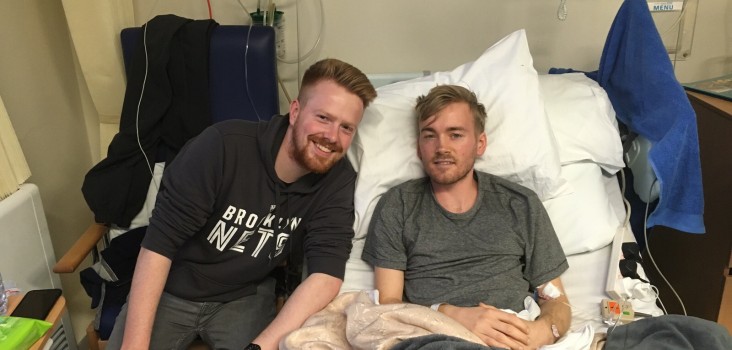Interleukin-2

Interleukin-2 is the name of the first cancer treatment I had after secondary tumours were discovered following successful surgery. It is a type of immunotherapy, which is different to more traditional treatments – like chemotherapy and radiotherapy – in that it empowers the body’s own immune system to destroy cancer cells.
IL-2 is actually produced naturally in the body, but in very small amounts. It is a type of protein that regulates the activities of white blood cells, making sure they go after the bad stuff they should be going after.
For the treatment, a synthetic version of IL-2 is created and given in high doses to stimulate the growth of cells that attack cancer cells. It’s used in the battle against advanced kidney cancer but can also treat melanoma and types of leukemia, as well as being trialled for other types of cancers. Elderly patients or those with heart problems are usually ineligible for treatment due to its severity.
At The Christie, where I am being treated, it is administered as an infusion. Nurses can give a dose every eight to 15 hours, with timings dependent on how the body handles the treatment. After five days it must stop, with a week’s break before another five days at hospital and then an eight-week recovery period.
There are many possible side effects although they can vary from person to person.
As of March 2016, I am no longer on IL-2 and am instead on Nivolumab, an extremely new drug. IL-2 worked for me in some sense, as it shrunk tumours in my neck and chest by an impressive amount. Unfortunately it did not work on a tumour in my left adrenal gland. However, it must be noted that the treatment was designed for standard kidney cancer and not my type (papillary renal cell carnicoma).
Click here to read a recent blog I wrote on my first experience of the treatment. If you have any other IL-2 related questions, feel free to get in touch.